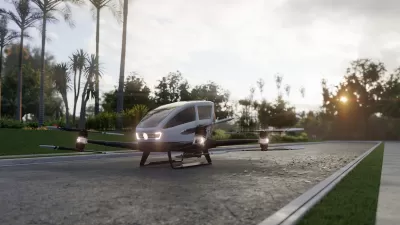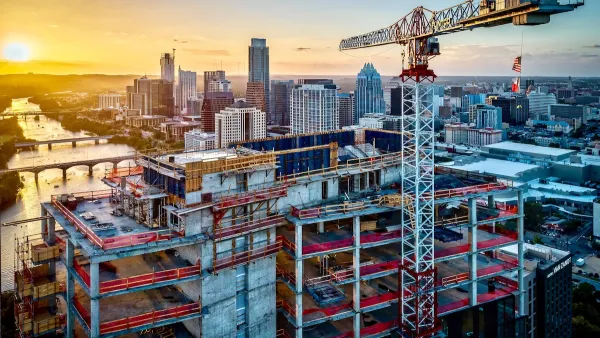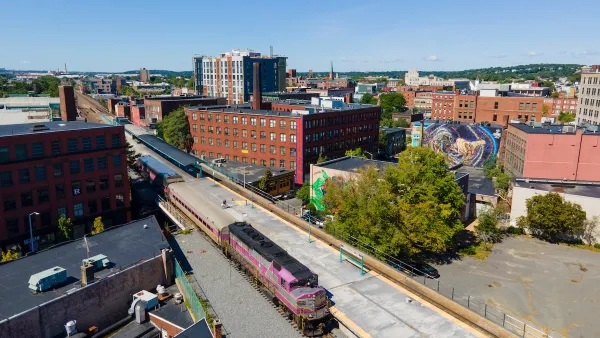If the technology takes off, city officials will need to step into the world of aviation rules to ensure safety and limit environmental impact.

A new report from the Berkeley Transportation Sustainability Research Center outlines some of the steps that aviation agencies and urban planners will need to take to plan for ‘advanced air mobility’ such as air taxis and delivery craft.
Writing in Smart Cities Dive, Dan Zukowski notes that “The Federal Aviation Administration published guidelines for the operation of air taxis in the nation’s airspace last year, expecting growth to accelerate beginning in 2028.”
Air taxis are “electrically powered aircraft that can take off and land vertically like a helicopter” that supporters say could ease traffic congestion and offer a new, sustainable transportation mode.
Many local governments shy away from aviation regulation, but if air taxis become safe and viable, city planners will need to pay close attention. “One area for collaboration is planning future development near vertiports. Aircraft will need approach and departure paths, and a tall building erected near a vertiport could affect flight operations.”
Cities will need to update zoning ordinances to regulate where vertiports can be located, how the services would impact neighborhoods, flight times, and connections to existing transit and key destinations. “The report concludes that the public sector will need to understand public perceptions of advanced air mobility deployments, develop zoning provisions, evaluate demonstrations and early operations and prioritize stakeholder and community engagement.”
FULL STORY: Air taxis will require urban, aviation planners to join forces: APA

Planetizen Federal Action Tracker
A weekly monitor of how Trump’s orders and actions are impacting planners and planning in America.

San Francisco's School District Spent $105M To Build Affordable Housing for Teachers — And That's Just the Beginning
SFUSD joins a growing list of school districts using their land holdings to address housing affordability challenges faced by their own employees.

Can We Please Give Communities the Design They Deserve?
Often an afterthought, graphic design impacts everything from how we navigate a city to how we feel about it. One designer argues: the people deserve better.

The EV “Charging Divide” Plaguing Rural America
With “the deck stacked” against rural areas, will the great electric American road trip ever be a reality?

Judge Halts Brooklyn Bike Lane Removal
Lawyers must prove the city was not acting “arbitrarily, capriciously, and illegally” in ordering the hasty removal.

Engineers Gave America's Roads an Almost Failing Grade — Why Aren't We Fixing Them?
With over a trillion dollars spent on roads that are still falling apart, advocates propose a new “fix it first” framework.
Urban Design for Planners 1: Software Tools
This six-course series explores essential urban design concepts using open source software and equips planners with the tools they need to participate fully in the urban design process.
Planning for Universal Design
Learn the tools for implementing Universal Design in planning regulations.
Borough of Carlisle
Smith Gee Studio
City of Camden Redevelopment Agency
City of Astoria
Transportation Research & Education Center (TREC) at Portland State University
City of Camden Redevelopment Agency
Municipality of Princeton (NJ)





























